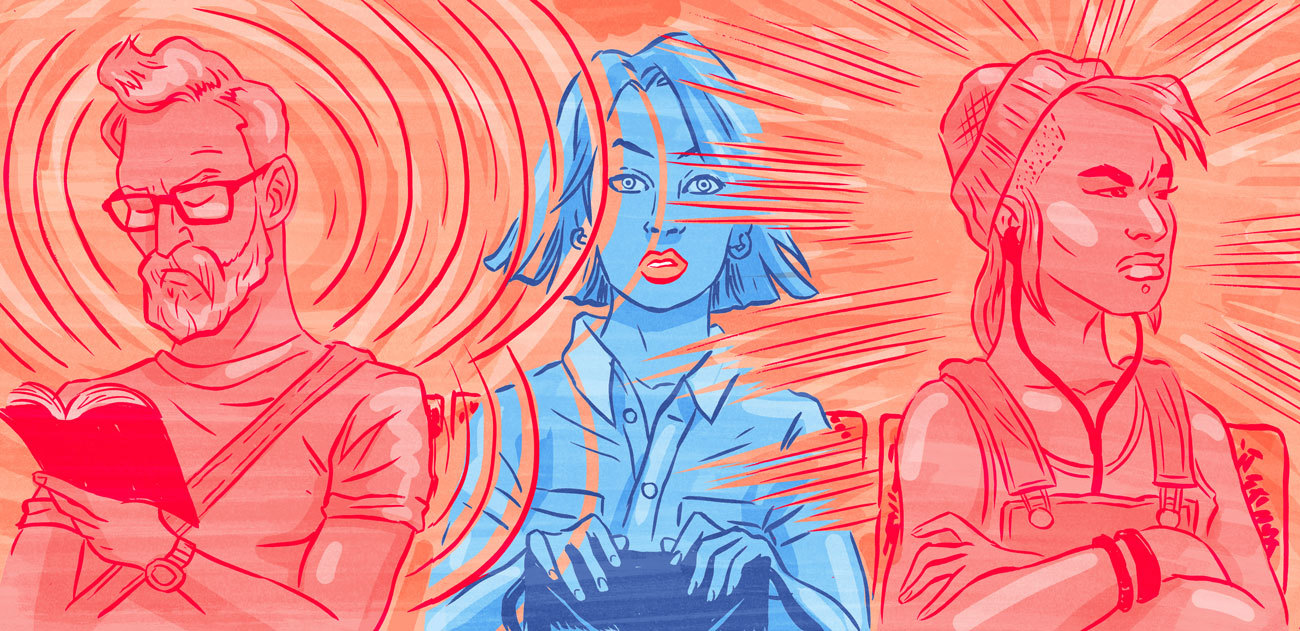Super-Empaths Are Real, Says Science

People who claim to be able to feel the emotional, mental or physical state of another person are called empaths. VICE made a documentary about them, meeting a few people who said they could do exactly that. The reception to the film was split: those who believed in empaths and perhaps thought they were one themselves, and those who thought it was all a load of nonsense.
Obviously the idea of someone feeling the interiority of another human being sounds a little more David Icke than Attenborough, which isn’t helped by the fact that scientific backing for these claims has been thin on the ground. In fact, we don’t even know much about the neurology behind empathy generally. Researchers have basic ideas and are fairly certain about which particular brain regions are involved, but this is very much a new area of study.
However, new research supports the existence of empaths, finding that between 1 to 2 percent of the population report experiencing this condition. The work has been carried out by Dr Michael Banissy, a Professor of Psychology at Goldsmiths, and his post-doctoral researcher, Dr Natalie Bowling, who spent years looking into empathy and, more specifically, mirror-touch synaesthesia.
Synaesthesia occurs when normally distinct senses are blurred together. Some people can “hear” colours, “see” sounds or “taste” words. In the case of mirror-touch synaesthesia, sight and touch overlap to the extent that if a synaesthete sees someone being touched on the face, they feel it on their own face.
Mirror-pain synaesthesia is a far more common and relatable experience – someone scratching all over and you suddenly feeling itchy, for instance (Bowling says that around 30 percent of the population experiences this). But it’s mirror-touch – that trait of being able to “feel” the feelings of others – that is rare enough to be an alien concept to 98 to 99 percent of the population.
During part of this research, Banissy ran a study at the Science Museum in London, asking passers-by to fill out questionnaires about their own empathy levels and to take part in tests, during which they were delivered a tap to their cheek while being shown someone else being tapped on a different side of their face.
WATCH: Are You an Empath?
“The idea being that if you have mirror-sense synaesthesia you’re more likely to believe you’re being tapped on both sides of the face,” says Bowling. “These people are going to find it really hard to focus on what they’re actually feeling, and they’re going to get confused and make more errors and be slower to answer about whether they’re being touched.”
What’s new about this research is that it’s not simply relying on self-reported empathy – a critique of some of the empaths in the VICE documentary: their belief that if you call yourself an empath, you must be one. “It’s so difficult to say that one person’s experience is the same as someone else’s, so we wanted to compare people on some sort of task rather than what they describe their perspective as being,” says Bowling.
Interestingly, they found that many people with mirror-touch synaesthesia didn’t even know they had it. “Your brain is integrating everything,” says Bowling. “You’ve got your heartbeat, stomach, touch receptors on your skin, but it’s all put together holistically in your brain. We don’t think about it, really – it’s all going on in the background.” In other words, if you’ve always experienced other people’s sensations as your own from within your own body, how would you know?
The next step in this research, as far as Bowling is concerned, is to look into the issues surrounding a potential blurring of self. “I have a representation of what’s going on in my own body, and I have a representation that that person over there has hurt their arm or whatever, and it’s important for us to be able to switch between those representations in order to empathise,” she explains. “If I’m trying to empathise with somebody, I’m going to focus in on them instead of me, and vice versa in other situations. People that have this condition seem to have difficulty in controlling that move between that person and me, and me and that person.”
There could be an infinite number of mental, physical and emotional repercussions. Currently, Bowling says, people with mirror-touch report being overwhelmed a lot of the time.
Meanwhile, Dr Banissy has just commenced work on behavioural interventions to address low empathy levels. “His research should show that there are ways we can go in and train people to be more empathetic,” says Bowling. “We need to do the science and get those techniques robust enough to roll out, which would definitely make a lot of people’s lives easier. We have workplace sessions, like disciplinary training and training on how to listen to people, but imagine teaching managers and staff empathy.”
Banissy and Bowling will present their research at “Knowing me, knowing you: Mirror-sensory synaesthesia” on November 10 th at The Old Operating Theatre Museum during the 2018 Festival of Social Science.
This article originally appeared on VICE UK.